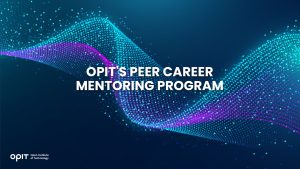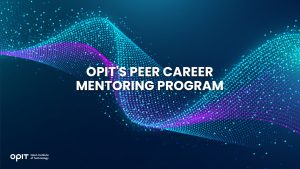

As we continue the slow march towards an AI-powered future, the coding and technical skills computer science graduates have are in increasingly high demand. This demand accounts for the high salary expectations of a computer science expert (the average salary in the field is €5,700 in Germany) and makes you more attractive as a hiring prospect to employers.
The challenge – finding a quality computer science course that provides the knowledge you need and has a reputation that forces employers to take notice. The four courses in this article (combined with related studies) transform you from computing enthusiast to sought-after computer scientist.
Top Free Computer Science Courses
Kicking off this computer science course list, we have a pair of the best free online computer science courses for building a foundation within the subject area.
Course 1 – CS50: Introduction to Computer Science (Harvard University)
If you’re looking for a free course that carries plenty of prestige, anything with the “Harvard” label attached is a good start. CS50 is a self-paced course, with Harvard estimating an 11-week completion time with between 10 and 20 hours of daily studying. It’s offered in English (sadly, no alternative languages exist at the time of writing) and it’s free to take, though you’ll pay $189 (approx. €175) for an official certificate.
The course covers programming language basics, starting with simple web-based HTML and advancing into Python and C. Advanced computing concepts, such as data structures and cybersecurity, are also covered, though you’re getting more of a baseline knowledge than specialized teaching. Think of the course as a computer science primer designed to give you a foundation that’s ideal for moving on to more complex studies. Add to that the Harvard seal of approval, which looks great on any CV, and you have a course that’s available globally and ideal for impressing employers.
Course 2 – CompTIA A+ (CompTIA)
This free course is A+ by name and mostly A+ by nature, with CompTIA advertising it as the perfect pathway to follow if you want a career in IT or computer sciences. You get an industry-recognized credential that employers will love, with the course focusing as much on practical skills (such as thinking on your feet in an IT crisis) as it does on theoretical instruction.
That’s not to say that theory isn’t covered. Once you’ve gotten to grips with the basics of the hardware and various operating systems, you’ll move into practical modules focused on networking, software, and cybersecurity. The course providers carry some industry weight, too, as titans like Dell, HP, and Intel recommend CompTIA’s courses for anybody who wants to break into the workforce.
There are some downsides – namely the minimal theoretical teaching makes it harder to understand why the practical things you’ll learn work. But as a companion piece to a more technical course (such as CS50), A+ is a great way to develop much-needed skills.
Other Notable Free Courses
The two courses listed above are far from the only free computer science course options available, with the following also being solid choices:
- Python for Everybody – Coming from the University of Michigan, this course teaches the ins and outs of a popular programming language used in AI and machine learning.
- IBM Data Science Professional Certificate – As something of a computer science-adjacent course, IBM’s certificate hones in on data science topics, such as visualization and machine learning models.
- Introduction to Computer Science and Programming – Put together by the best minds at the Massachusetts Institute of Technology (MIT), this is a great course for beginners who are starting from square one when it comes to programming.
Top Paid Computer Science Courses
If you have some money to spend on your education (or access to student funding) these are the best courses for computer science students who value a more traditional paid education.
Course 1 – Bachelor in Modern Computer Science (OPIT)
As an entirely online course, OPIT’s offering allows you to learn at mostly your own pace, though you’re still expected to complete coursework and pass exams at appropriate times. It’s a three-year course (though two-year fast-track options are available) and it’s provided by an institution that has European Qualification Framework (EQF) credentials.
Granted, the course doesn’t come cheap, with its €3,600 per year tuition fees adding up to €10,800 for a three-year course. But that money buys you a comprehensive computer science education, starting with the basics of software development before moving on to modern concepts, like AI and cloud computing. Along the way, you’ll earn professional certifications from Microsoft and Google, giving you something tangible to place on your CV even as you’re still studying. Credit transfer is also available for students who started a computer science course elsewhere and want to transfer to OPIT’s offering.
Course 2 – Computational Science and Engineering (Technical University of Munich)
Perpetually hovering around the top 50 universities in the world (it ranked 50th in 2021), the Technical University of Munich (TUM) is like the MIT of Europe. With this course, TUM offers something for students who’ve already started on the computer science track and now feel ready to bring those skills together with applied math and engineering for a Master’s certification.
Lasting four semesters of full-time study, the course costs €152.30 and delivers 120 ECTS credits. You’ll hone in on numerical simulation, focusing on how to develop math-based problem-solving methods that help in developing systems and simulations. Theory is king in this course. But you’ll come away with such a solid grounding in that theory (as well as experience with simulated applications) that prepare you for a computer science and engineering career.
Other Notable Paid Courses
More thought goes into choosing a paid computer science course because you’re investing more than just time into your studies. If neither of the above two courses whets your appetite, the following are a few other notable providers offering courses to European and international students:
- Computer Science BSc by Cambridge University – You get more than a degree from one of the UK’s most prestigious universities with this course. Given that Cambridge University lies in the heart of “Silicon Fen,” this course puts you in the ideal location to gain exposure to over 1,000 Cambridge-based tech companies.
- Computational Thinking for Problem Solving – Devised by the Penn University faculty, this four-week online course starts by teaching the “pillars” of computational thinking, ending with an applied task using the Python programming language.
- Computer Science 101L Master the Theory Behind Programming – Available via Udemy, this course costs about €69 or is available with a monthly subscription to Udemy. It features nearly 12 hours of recorded teaching sessions, alongside articles and other resources, that teach the basics of computer science.
Related Courses for a Well-Rounded Computer Science Education
The courses covered so far focus on computer science, with some variance in a few cases, which is like building the foundations for a house. To turn those foundations into something special (and something from which you can make a living), you may need a few more materials. Computer science-related courses give you those materials, with the following areas being great targets for further study.
Programming Languages
Programming is the beating heart of computer science. Every piece of software you’ll ever use has a program behind it. Most basic computer science courses teach general programming skills, often in Python, but further study into languages like SQL, Java, and C broadens your skillset to make you more attractive to employers.
Web Development
According to web3.career, the average European web developer picks up €70,000 per year, with potential to hit six figures with the right company and training. Many of the basics of web development are things you’ll pick up in a computer science course, though those looking for more formal certification should consider the following:
- Full-Stack Web Development for Free (CodingNinjas)
- Intro to HTML 5 (University of Michigan)
- Web Developer on Google Digital Garage (Google)
Cybersecurity
The European Council’s research suggests that the cost of cybercrimes amounted to €5.5 trillion on the continent alone, with ransomware attacks being among the biggest threats facing EU companies. Therein lies an opportunity – businesses don’t want to lose trillions of euros and your cybersecurity skills could be the shield they need to fend off cyberattacks.
Top cybersecurity courses to consider include:
- Google Cybersecurity (Google)
- The Complete Cyber Security Course (Udemy)
- Introduction to Cybersecurity Foundations (Infosec)
Data Science
Estimates state that the data science industry will have a 29% compound annual growth rate (CAGR) between 2022 and 2029, making it an ever-growing monolith in the computer science sector. Your ability to extract insights from massive datasets could be useful to employers and is buoyed by the following top courses:
- Data Science MicroMasters (University of California San Diego)
- CS109 Data Science (Harvard University)
- Master of Science in Machine Learning and Data Science (Imperial College London)
Tips for Choosing the Right Computer Science Course
The computer sciences courses covered in this article run the gamut from beginner-level programs to full Master’s degrees. If you feel like you’re struggling to navigate the sheer volume of options available, these tips help you pick an appropriate course:
- Be honest with yourself about your current skill level to choose a computer science course that challenges without being overwhelming.
- Compare the course’s curriculum and learning outcomes with your goals to ensure you’ll get what you need from your studies.
- Measure your time commitments (and how the course format allows for these commitments) against those the course demands.
- Research the instructors who created the course and check online reviews from past and current students.
- Determine whether the cost of the course (both monetary and time-wise) delivers a suitable return on your investment.
Start Your Computer Science Journey With the Right Course
Options abound when you’re looking for a computer science course, with quality free options sitting right alongside traditional paid courses. Whatever course you choose, always remember – one step in the right direction still means that you’re moving forward. By choosing a course, you take your first step into a constantly evolving and expanding world that could provide you with a lifelong career.
Related posts

Source:
- Raconteur, published on November 06th, 2025
Many firms have conducted successful Artificial Intelligence (AI) pilot projects, but scaling them across departments and workflows remains a challenge. Inference costs, data silos, talent gaps and poor alignment with business strategy are just some of the issues that leave organisations trapped in pilot purgatory. This inability to scale successful experiments means AI’s potential for improving enterprise efficiency, decision-making and innovation isn’t fully realised. So what’s the solution?
Although it’s not a magic bullet, an AI operating model is really the foundation for scaling pilot projects up to enterprise-wide deployments. Essentially it’s a structured framework that defines how the organisation develops, deploys and governs AI. By bringing together infrastructure, data, people, and governance in a flexible and secure way, it ensures that AI delivers value at scale while remaining ethical and compliant.
“A successful AI proof-of-concept is like building a single race car that can go fast,” says Professor Yu Xiong, chair of business analytics at the UK-based Surrey Business School. “An efficient AI technology operations model, however, is the entire system – the processes, tools, and team structures – for continuously manufacturing, maintaining, and safely operating an entire fleet of cars.”
But while the importance of this framework is clear, how should enterprises establish and embed it?
“It begins with a clear strategy that defines objectives, desired outcomes, and measurable success criteria, such as model performance, bias detection, and regulatory compliance metrics,” says Professor Azadeh Haratiannezhadi, co-founder of generative AI company Taktify and professor of generative AI in cybersecurity at OPIT – the Open Institute of Technology.
Platforms, tools and MLOps pipelines that enable models to be deployed, monitored and scaled in a safe and efficient way are also essential in practical terms.
“Tools and infrastructure must also be selected with transparency, cost, and governance in mind,” says Efrain Ruh, continental chief technology officer for Europe at Digitate. “Crucially, organisations need to continuously monitor the evolving AI landscape and adapt their models to new capabilities and market offerings.”
An open approach
The most effective AI operating models are also founded on openness, interoperability and modularity. Open source platforms and tools provide greater control over data, deployment environments and costs, for example. These characteristics can help enterprises to avoid vendor lock-in, successfully align AI to business culture and values, and embed it safely into cross-department workflows.
“Modularity and platformisation…avoids building isolated ‘silos’ for each project,” explains professor Xiong. “Instead, it provides a shared, reusable ‘AI platform’ that integrates toolchains for data preparation, model training, deployment, monitoring, and retraining. This drastically improves efficiency and reduces the cost of redundant work.”
A strong data strategy is equally vital for ensuring high-quality performance and reducing bias. Ideally, the AI operating model should be cloud and LLM agnostic too.
“This allows organisations to coordinate and orchestrate AI agents from various sources, whether that’s internal or 3rd party,” says Babak Hodjat, global chief technology officer of AI at Cognizant. “The interoperability also means businesses can adopt an agile iterative process for AI projects that is guided by measuring efficiency, productivity, and quality gains, while guaranteeing trust and safety are built into all elements of design and implementation.”
A robust AI operating model should feature clear objectives for compliance, security and data privacy, as well as accountability structures. Richard Corbridge, chief information officer of Segro, advises organisations to: “Start small with well-scoped pilots that solve real pain points, then bake in repeatable patterns, data contracts, test harnesses, explainability checks and rollback plans, so learning can be scaled without multiplying risk. If you don’t codify how models are approved, deployed, monitored and retired, you won’t get past pilot purgatory.”
Of course, technology alone can’t drive successful AI adoption at scale: the right skills and culture are also essential for embedding AI across the enterprise.
“Multidisciplinary teams that combine technical expertise in AI, security, and governance with deep business knowledge create a foundation for sustainable adoption,” says Professor Haratiannezhadi. “Ongoing training ensures staff acquire advanced AI skills while understanding associated risks and responsibilities.”
Ultimately, an AI operating model is the playbook that enables an enterprise to use AI responsibly and effectively at scale. By drawing together governance, technological infrastructure, cultural change and open collaboration, it supports the shift from isolated experiments to the kind of sustainable AI capability that can drive competitive advantage.
In other words, it’s the foundation for turning ambition into reality, and finally escaping pilot purgatory for good.

The Open Institute of Technology (OPIT) is the perfect place for those looking to master the core skills and gain the fundamental knowledge they need to enter the exciting and dynamic environment of the tech industry. While OPIT’s various degrees and courses unlock the doors to numerous careers, students may not know exactly which line of work they wish to enter, or how, exactly, to take the next steps.
That’s why, as well as providing exceptional online education in fields like Responsible AI, Computer Science, and Digital Business, OPIT also offers an array of career-related services, like the Peer Career Mentoring Program. Designed to provide the expert advice and support students need, this program helps students and alumni gain inspiration and insight to map out their future careers.
Introducing the OPIT Peer Career Mentoring Program
As the name implies, OPIT’s Peer Career Mentoring Program is about connecting students and alumni with experienced peers to provide insights, guidance, and mentorship and support their next steps on both a personal and professional level.
It provides a highly supportive and empowering space in which current and former learners can receive career-related advice and guidance, harnessing the rich and varied experiences of the OPIT community to accelerate growth and development.
Meet the Mentors
Plenty of experienced, expert mentors have already signed up to play their part in the Peer Career Mentoring Program at OPIT. They include managers, analysts, researchers, and more, all ready and eager to share the benefits of their experience and their unique perspectives on the tech industry, careers in tech, and the educational experience at OPIT.
Examples include:
- Marco Lorenzi: Having graduated from the MSc in Applied Data Science and AI program at OPIT, Marco has since progressed to a role as a Prompt Engineer at RWS Group and is passionate about supporting younger learners as they take their first steps into the workforce or seek career evolution.
- Antonio Amendolagine: Antonio graduated from the OPIT MSc in Applied Data Science and AI and currently works as a Product Marketing and CRM Manager with MER MEC SpA, focusing on international B2B businesses. Like other mentors in the program, he enjoys helping students feel more confident about achieving their future aims.
- Asya Mantovani: Asya took the MSc in Responsible AI program at OPIT before taking the next steps in her career as a Software Engineer with Accenture, one of the largest IT companies in the world, and a trusted partner of the institute. With a firm belief in knowledge-sharing and mutual support, she’s eager to help students progress and succeed.
The Value of the Peer Mentoring Program
The OPIT Peer Career Mentoring Program is an invaluable source of support, inspiration, motivation, and guidance for the many students and graduates of OPIT who feel the need for a helping hand or guiding light to help them find the way or make the right decisions moving forward. It’s a program built around the sharing of wisdom, skills, and insights, designed to empower all who take part.
Every student is different. Some have very clear, fixed, and firm objectives in mind for their futures. Others may have a slightly more vague outline of where they want to go and what they want to do. Others live more in the moment, focusing purely on the here and now, but not thinking too far ahead. All of these different types of people may need guidance and support from time to time, and peer mentoring provides that.
This program is also just one of many ways in which OPIT bridges the gaps between learners around the world, creating a whole community of students and educators, linked together by their shared passions for technology and development. So, even though you may study remotely at OPIT, you never need to feel alone or isolated from your peers.
Additional Career Services Offered by OPIT
The Peer Career Mentoring Program is just one part of the larger array of career services that students enjoy at the Open Institute of Technology.
- Career Coaching and Support: Students can schedule one-to-one sessions with the institute’s experts to receive insightful feedback, flexibly customized to their exact needs and situation. They can request resume audits, hone their interview skills, and develop action plans for the future, all with the help of experienced, expert coaches.
- Resource Hub: Maybe you need help differentiating between various career paths, or seeing where your degree might take you. Or you need a bit of assistance in handling the challenges of the job-hunting process. Either way, the OPIT Resource Hub contains the in-depth guides you need to get ahead and gain practical skills to confidently move forward.
- Career Events: Regularly, OPIT hosts online career event sessions with industry experts and leaders as guest speakers about the topics that most interest today’s tech students and graduates. You can join workshops to sharpen your skills and become a better prospect in the job market, or just listen to the lessons and insights of the pros.
- Internship Opportunities: There are few better ways to begin your professional journey than an internship at a top-tier company. OPIT unlocks the doors to numerous internship roles with trusted institute partners, as well as additional professional and project opportunities where you can get hands-on work experience at a high level.
In addition to the above, OPIT also teams up with an array of leading organizations around the world, including some of the biggest names, including AWS, Accenture, and Hype. Through this network of trust, OPIT facilitates students’ steps into the world of work.
Start Your Study Journey Today
As well as the Peer Career Mentoring Program, OPIT provides numerous other exciting advantages for those who enroll, including progressive assessments, round-the-clock support, affordable rates, and a team of international professors from top universities with real-world experience in technology. In short, it’s the perfect place to push forward and get the knowledge you need to succeed.
So, if you’re eager to become a tech leader of tomorrow, learn more about OPIT today.
Have questions?
Visit our FAQ page or get in touch with us!
Write us at +39 335 576 0263
Get in touch at hello@opit.com
Talk to one of our Study Advisors
We are international
We can speak in:


